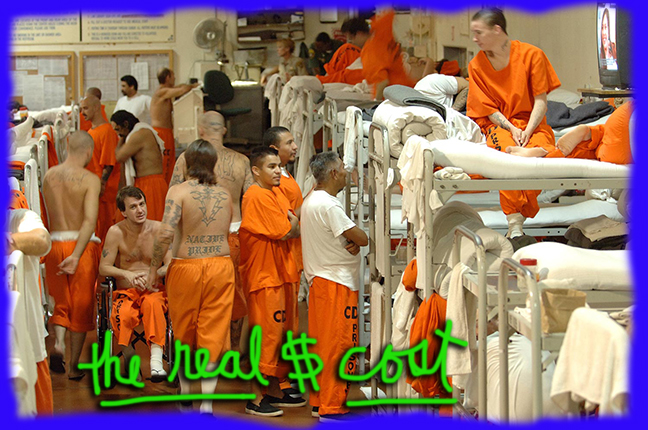NEW STUDY SHOWS THE AGGREGATE YEARLY COST OF INCARCERATION IN THE U.S TOPS $1 TRILLION
For years researchers have worked to place a dollar value on various social problems. For instance, the cost of childhood poverty, the cost of crime in people lives, the cost of certain kinds of disease, are all areas that have drawn many research hours in past decades.
But there have been no serious attempts, say experts, to quantify the total yearly cost of incarceration—meaning the aggregate cost.
Now, however, five researchers at Washington University in St. Louis have worked to fill that gap with a new study that quantifies the cumulative cost of locking up so many Americans.
To come up with their numbers, the researchers—who are with the university’s Concordance Institute for Advancing Social Justice—looked at a lot more than merely the specific cost of corrections spending, which is approximately $80 billion a year. They also included the collateral costs, which means, the study’s authors wrote, “all costs that reduce social welfare.”
This study estimated the “aggregate burden of incarceration” to be an eye-opening one trillion dollars—which, by the way, approaches 6% of our GDP.
To get to that number, the researchers divided their areas of examination into the twenty-two estimated costs, which they further grouped into three categories: (1) costs of corrections—meaning the literal prison, jail and other costs (2) costs borne by incarcerated persons, and (3) costs borne by families, children, and communities.
“’If anything, we believe our study underestimates the true cost of incarceration,’” study leader Michael McLaughlin, told the St. Louis Post-Dispatch, “because there are some costs like poor emotional health that can’t be quantified by a dollar amount.”
For instance, the study found that, after subtracting the value of prison production (work done by prisoners), the average incarcerated person incurs $33,066 in 2014 dollars in lost productivity per year.
And there are other costs to inmates, for example, the cost of nonfatal injuries sustained while incarcerated amounts to $28.0 billion.
The list goes on from there.
THE ECONOMIC EFFECT ON FAMILIES
When it comes to families, the study looked at things like the fact that families of inmates were more likely to move when their loved ones got locked up. It turns out 1 in 9 families relocate to be nearer to the prison where their loved one is housed, in order to facilitate visits.
Families of inmates were also more likely to be evicted from their homes than similar families at like socio economic levels.
Family members often incur incarceration-related debt, specifically having to do with the costs of visits and phone calls.
Sixty-six percent of incarcerated persons and family members report experiencing detrimental mental health effects due to the incarceration such as depression, anxiety, and post-traumatic stress disorder—all of which has a price tag.
The rise in the incarceration rate of females has been demonstrated to be responsible for a significant rise in the number of kids going into foster care, according to the study.
In addition, incarceration contributes to a rise in homelessness, divorce, infant mortality, and more. Plus, according to the study, parental incarceration “increases the criminality of children, then it creates second generation costs that are manifested in a higher rate of future crime.”
ONLY PART OF THE COST/BENEFIT PICTURE
The study’s authors admit that their research shows only part of the picture because it does not “consider the benefits of incarceration.”
To see the real affects incarceration, “a policy maker would need to know not only the costs of incarceration but also the benefits,” they write.
Nevertheless, the research seems rigorous and a good start—albeit with more work still to be done.

